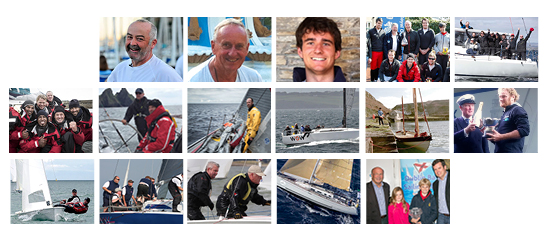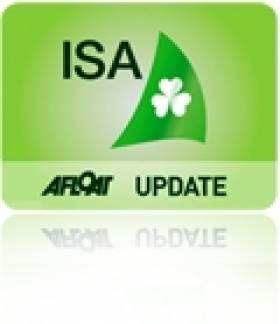Displaying items by tag: vote
Vote for Your Irish Sailor of the Year 2015
#sailoroftheyear – The Afloat.ie Irish Sailor of the Year 2015 award will be announced at the Sailing Awards celebration in Dublin on the afternoon of Thursday, February 4th at a ceremony which will also see each Sailor of the Month individually honoured, the ISA Youth Sailor of the Year awarded, the ISA Training Centre of the Year honoured, and the ISA/Mitsubishi Motors Sailing Club of the Year announced.
As in previous years, the boating public and maritime community can have their say to help guide judges in deciding who should be crowned Ireland's Sailor of the Year for 2015 by using our online poll. The judges welcome the traditional huge level of public interest in helping them make their decision, but firmly retain their right to make the ultimate decision for the final choice while taking voting trends into account.

Please note: One vote per person. Your vote DOES NOT necessarily determine the overall winner.
The national award is especially designed to salute the achievements of Ireland's sailing's elite. After two decades the awards has developed in to a premier awards ceremony for water sports.
As in previous years, the overall national award will be presented to the person who, in the judges' opinion, achieved the most notable results in, or made the most significant contribution to, Irish sailing during 2015.
By supporting your favourite nominee you are creating additional awareness of their nomination and highlighting their success.
Voting online is open to public view from today until Monday, February 1.
CLICK HERE TO READ EACH ACHIEVEMENT FROM 2015 AND VOTE FOR YOUR SAILOR ON THE AFLOAT.ie HOME PAGE in the right hand column.
Created in 1996, the Afloat Sailor of the Year Awards represent all that is praiseworthy, innovative and groundbreaking in the Irish sailing scene.
Since it began 20 years ago the awards have recognised over 320 monthly award winners in the pages of Ireland's sailing magazine Afloat and these have been made to both amateur and professional sailors. The first ever sailor of the year was Dinghy sailor Mark Lyttle, a race winner at the 1996 Atlanta Olympics.
The judges decision is final and no correspondence will be entered into.
Who will win Sailing's All Ireland Champs?
They've changed the date, the notice of race and now the venue but the eight finalists in this year's All Ireland Sailing Championships stay the same. We're all hoping the ISA gets more luck on the wind front next Saturday when the championship is rerun in Kinsale. Who do you think will win? Cast your vote in the left hand column.
More All Ireland articles HERE
Poll Shows Raging Bull as Favourite for ICRA's Boat of the Year
With just 24 hours to go to the announcement of sailing's boat of the year award at tomorrow's Cork harbour ICRA conference the consistent poll topper from Afloat's online survey shows ISORA offshore champion Raging Bull as a clear favourite with 1175 votes. Second is Marinerscove on 873 and Errislannan third on 256 votes. Polling began just over a month ago and 2,600 votes have been cast. See the poll on the left hand column of the home page. There's still time to cast your vote to try and influence ICRA judges!





























































